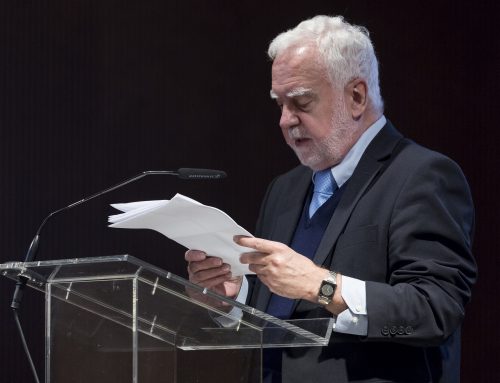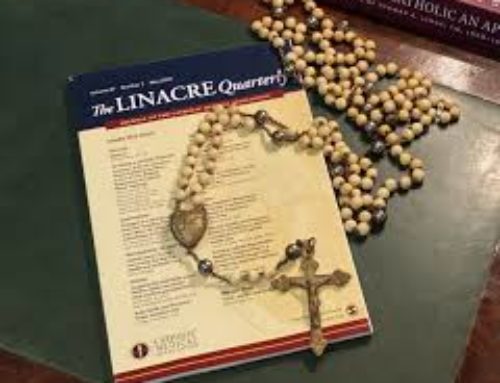Alexandre Laureano Santos

“This world does not explain itself. It may be a miracle with a supranatural explanation; it may be a conjuring trick with a natural explanation… There is something personal in the world, as in a work of art. Whatever it means, it means violently”.
G. K. Chesterton, Orthodoxy
1. Throughout the evolution of mankind there have been cataclysms with extensive and severe impacts on human societies and the environment, some of which were influential in the evolution of the history of civilization. The scientific and technological development of the last hundred years has helped to reduce some of the catastrophic consequences of these events through knowledge of their origins, their conditions and its approach. These events lead to large mortalities and morbidities in human communities. The affected people need extraordinary efforts to mobilize and utilize additional resources to address them. Due the intensity of the devastation means of intervention can quickly break and run out. Each catastrophic event requires an organized multidisciplinary response involving many different types of support, ranging from transportation and food supplies to medical services according to the type of disaster, the population exposed to the risks and the pre-existing standard of life. Physicians and health personnel are likely to be part of coordinated operations involving other responders such as rescue and enforcement law personnel. These operations require an effective and centralized authority to coordinate public and private efforts. Rescue workers and physicians are confronted with an exceptional situation in which their normal professional ethics must be brought to the situation to ensure that the treatment of disaster survivors conforms to the basic ethical tenets and is not influenced by other motivations. In catastrophic events ethical rules defined and taught beforehand should complement the individual ethics of physicians and health personnel. Inadequate and/or disrupted medical resources on site and the large number of people injured in a short time present specific moral challenges.
The powerful current media can propagate the news of disasters in real time, which can help to anticipate the consequences and the active protection of threatened communities. On the other hand, often occurs dissemination of news and images, which do not reflect the objective reality of events, distort the truth, concur to unwarranted alarms and a worsening of the consequences. Reporters, photojournalists, news agency members, and image TV personnel must bear in mind the ethical human respect for the victims and their families, and that rescue operations must take precedence over their
task to inform. On-site and field reports must build on verified facts and taking in considerations the feelings of the victims and their communities.
The disasters can occur in all places in the world; however, the human, social and environment repercussions have necessary less impact in the communities with greater social and economic organization in which are usually provided with preventive measures for predictable threats and there are contingency plans in the institutions. The most dramatic consequences of disasters are mainly on the poorest and least well prepared to react and overcome adverse circumstances, dramatically accentuating their needs and their vulnerabilities. The voices of the Holy Father and the Church have been heard in the community and personal support to people affected by these events around the world, often with a large number of victims and environmental devastation with serious repercussions on the populations involved for several generations.
2. The concept of a catastrophe for our purpose focuses particularly on the medical aspects. A disaster is the occurrence of a calamitous and usually violent event resulting in a large number of victims, substantial material damage, a considerably displacement of people and/or significant social disruption. In general there multiple and complex elements in a catastrophic event: a great number of human victims, an extensive damage of the environment with serious disturbances of the relationship between humans and the ambient, and the urgency of community and social answers in order to overcome the consequences and to limit the damages. This definition does not exclude situations arising from armed conflicts, wars and terrorism, whether international or internal. However, wars and terrorism give rise to other kind of ethical, social, political concerns and problems that will not be considered in this communication. From the medical standpoint, catastrophe situations are characterized by an acute and unforeseen imbalance between the capacities of the available health care resources for the affected populations and the needs of the survivors who are injured whose life is threatened over a given period of time.
The medicine of catastrophes is concerned predominantly two types of events: 1- Natural disasters; and 2- Anthropogenic disasters (caused by human activity). Whatever the initial cause, these are always accompanied by a large number of immediate victims and social disorganization and extensive damage to the surrounding environment for long-term, conditions which together potentiate the worsening conditions of survival hampering rescue survivors and victims.
Natural disasters are always linked to phenomena that occur spontaneously in nature. It may have meteorological, geological, biological or astronomical origin. Generally, whatever the primary mechanism, combined traumatic injuries cause bleeding, drowning, burns, acute respiratory failure, incarcerations, epidemics, dehydration and/or malnutrition. There are descriptions of natural disasters since the remotest history and signs from other geological disasters that occurred in periods much prior to hominization. Most natural disasters are linked to periodic phenomena that occur preferentially in certain areas of the globe such as typhoons and earthquakes of tectonic or volcanic origin. Their effects can be destructive in areas far removed from its point of origin and have serious repercussions and extended on several continents and
may have repercussions on the entire planet. Every year we are told about multiple similar events at the instant of its occurrence or even during its warning signs by means of online information. In the last two decades there were 3,000,000 of disaster fatalities and over 1,000,000 displaced families worldwide.
On the morning of November 1st, 1755, All Saints day, there was a serious earthquake that destroyed the city of Lisbon. The epicenter occurred offshore about 400 kilometers southwest of Lisbon in the Atlantic confluence of African and European tectonic plates. The reports at the time say the quakes were felt for periods ranging from six minutes to two hours causing huge cracks in the ground that still remains there today. The magnitude may have reached the grade 9 on the Richter scale. In Mercalli scale is estimated between grades X-XI. A huge wave which is assumed to have reached up to 10 meters tall submerge the port and the city center, having penetrated the waters up to 400 meters coming from the river-bed of the estuary of the Tagus river. In areas that were not affected by the tsunami fire spread and lasted for at least five days. The tsunami destroyed the Algarve coastal fortresses and dwellings registering waves 30 meters toll. The tsunami generated by tectonic movement swept from North Africa to Scandinavia and across the Atlantic Ocean, reaching as far away as Brazil and North American coasts. Of the 275,000 inhabitants of Lisbon then, it is believed that 90,000 died in the early days, 1,000 of which directly victimized by the tsunami. About 85% of the buildings were destroyed in Lisbon including famous palaces, theaters, libraries, monasteries, churches, hospitals and all administrative structures. Several buildings that had suffered little damage in the earthquake were destroyed by the fire that followed the earthquake, caused by cooking, by candlelights and later by looters who plundered the wreck.
If we will exclude the intentional damage effects of war, terrorism and deceit, all anthropogenic disasters result from technological accidents. Should be considered disasters that may occur in plants (fires, explosions, accidents with extensive contamination of the environment by releasing toxic and radioactive materials), in dams and sea, air and land means of transportation. Can result from human error or merely accidental convergence of circumstances. There should be particular care security in these systems that are designed, created and maintained by man and for the collective welfare. In all complex engineering systems involving foreseeable risks to human communities, since its theoretical conception, during the preparation and the end of its operating cycle, should be carefully evaluated for safety, particularly with regard to the preparation of staff who prepares it, the knowledge of the risks and prevention of human error in the handling of hazardous materials, maintenance and evaluation of equipment, monitoring of alarms in all contours and technology that can prevent major accidents. In the facilities must have permanent teams dedicated to the security. The most serious accidents result usually due a number of flaws in a cycle that converges to the disaster and can be avoided if the premonitory signs are correctly interpreted. The technological disasters can result from human errors for violation of rules or be the result of fortuitous circumstances of chance for which human intervention also may also contribute. These attitudes have a clear ethical component.
Dangers arising from nuclear disasters, especially after the events at Chernobyl nuclear power plant in Ukraine and Fukushima in Japan deserve particular mention. Anyhow, many contemporary opinions propose the nuclear option as a necessary and safe path to be followed, as the currently most used energy sources have risks that can leave environmental streaks difficult to repair. It is stated also that it is possible to prepare technological responses safer than those are currently used. This is a controversial topic of political, economic and technological developments that has obvious ethical contours of which public opinion in contemporary societies can not alienate.
3. Although most natural disasters are unpredictable and result from the combination of several phenomena, which are linked unfavorably, some may have some degree of predictability. Many threats are completely random as the fall of a meteor, others may result from a chain of events that tend to be recurrent in time as typhoons, earthquakes and effects of volcanic eruptions, to which certain regions of the globe are more subjected. Thus, many human communities are particularly exposed to certain risk factors. Knowledge of the specific risks of catastrophe that each community is subjected to and the preparation through education of its members, the organization of cities and the very architecture of the dwellings shall be subject to rules to protect personal property and the common good. Remember that occupation of riverbeds by human constructions have caused floods with very serious consequences, as has happened in Brazil, India or Portugal. In the opposite direction, it is recalled that during the last major earthquake that occurred in S. Francisco (California) there was a stadium full of spectators of a great sporting event and, despite the high intensity of the earthquake and the degree of destruction of the buildings, the grounds were evacuated without casualties.
By focusing the obligation of communities to know and protect themselves from threats we refer to an intervention ethical sense necessarily. In the protection of human lives and property in the face of threats, each community must face up collectively as a moral subject and an active participant and not as a mere passive spectator. This active participation of community members is an important component of the “General Plan for Disaster Area” and can powerfully contribute to social cohesion and to reduce the consequences of a collective disaster. Thus, on the organization of the common environment, schools, hospitals and other collective institutions, there must be contingency plans for potential disasters reported and well known by all. The attitudes of the human communities before disasters involve the concept of the common good, evoked by the Social Doctrine of the Church. In fact, the community should look up all the possible good through the collaboration of each person, in this case in the prevention of disasters. The participation in the common good will not result in a deprivation of some as a contribution to the collective good. Indeed, the collective good is really a very personal good. Each person is not a passive component of the society but it is a builder, a participant and a recipient of the benefits as personel and familiary safety.
Certain human communities are more exposed to the dangers of disasters. We refer to populations in marginal areas of large cities with poor access that make difficult to aid the eventual victims. They consist of underserved populations, aging and isolated, with little community participation and internal conflicts, coexisting multicultural communities resulting from mobility and globalization features of the contemporary world; poverty, marginalization and drug addiction, and the presence of disabled and chronically ill children predominates in many of these areas.
Catastrophic events, irrespective of cause, share several characteristics that must be considered by all rescue personel: a) A sudden and unexpected occurrence, demanding prompt action (maximum 48 hours), without which the human and environmental consequences will tend to an immediate and progressive worsening; b) A great number of lethal victims and multiple population members exposed to the same or secondary risks (lack of shelter, lack of health care, malnutrition, forced migration, psychological stress); c) Natural or material damage to the survivors making access difficult and/or dangerous; d) Adverse effects on health due to pollution, to the risks of epidemics, and emotional/psychological factors; e) The context of insecurity, social and familiary disruption, opportunity for criminal acts and vandalism requiring police and military measures to maintain order; f) Means of communication and connection scarce and hard; g) Social media coverage.
In the early hours may be possible to provide relief only to a small number of victims. It should be emphasized that the dignity of the human person is equal in all phases of life, and it is not lawful to reduce support to someone just by criteria of age or social status. Priority should be given to those who are at immediate risk of life based on the principles of efficiency. In the event that many victims require urgent assistance then must act without distinction. However, as much as possible, one must respect the wishes of those who want to put the others for saving before themselves. Basic life support must not be discontinued to someone who is being assisted at the moment to help others who are in danger of life. In this case one must again act without distinction. Provision should be priorities in care screening, planned by teams of experienced medical emergency, giving priority to those who are at immediate risk of life, then those who require urgent treatment, and then to those who may have treatment deferred.
4. Principles of Social Doctrine of the Church that in the circumstances of prevention and occurrence of disasters have a direct and almost intuitive application are: a) Principle of defense and protection of human life; b) Principle of participation; c) Principle of the common good; d) Principle of the universal destination of earthly goods; e) Principles of solidarity and subsidiarity.
All here cited principles refer to the protection of human life, essential to human dignity, and the duty to support the poor and the disadvantaged. Human suffering is a clear sign of man’s natural condition of frailty. The dignity of people is not diminished by their vulnerability to a disaster and requires, by contrast, the fraternal solidarity of nations in supporting affected communities in order to alleviate the pain and suffering of human victims. The previously evoked concept of common good can also be applied
in cooperation among communities and states increasingly independent in many areas, and also in helping tha victims of the major disasters.
All evoked social values are inherent in the dignity of the human person, whose promotion they foster, even in the must difficult situations. Essentially, those values are charity, truth, freedom, and justice. They constitute the indispensable points of reference for public authorities and for all who will be called to respond and to be present to the catastrophes from all over the world. The values of freedom and justice refer to the persons dignity in particular by creating the conditions for survival and limitation of the needs, promotion a minimum welfare and stability including psychological stability support to the children and to the old, the promotion of human rights, equity and non-discrimination, social organization, legal protection, reintegration in the community networks enhancing skills and initiatives in strict collaboration with local authorities who better know the cultural characteristics of the affected populations.
The principles of classic bioethics in medical responses to disasters must be mentioned. We refer to the classical criteria of bioethics: beneficence, non-maleficence, autonomy and justice, developed by Beauchamp and Childress, which have an almost intuitive application. In disasters it should be given a particular emphasis to the principle of nonmaleficence, especially for personal unprepared for such interventions. First do not cause further damage by applying the criteria of maximum safety in all decisions and in all gestures. The precarious circumstances will require and justify a strict adherence to safety rules, maintaining the connection, obedience and pursuit of a centralized authority and effective integration in teamwork, pursuing the objective of security of all interventions carried out in accordance with the correct medical art, transmitting the information accurately and sobriety, avoiding the manipulation of the crisis and contributing to a stabilization of the emotional climate. The principle of beneficence is the engine of all moral actions, means the compassion for their similar that leads to the physical presence of the responders in disasters who often jeopardize their own safety.
5. In Portugal, when we refer to the catastrophes we use an anagram formed by the letters of the word H E L P. The letter H to refer the expression Humanistic preparation; the letter E to refer the word bE – Être (French) in the sense of staying with who are affected; the letter L to refer the Links with the concerned persons and communities; and the letter P to refer Palliative care for those who we can merely mitigate their suffering.
Humanistic preparation of the physicians and all sanitary personnel, meaning multicultural education for understanding other ways of life and privations; meaning scientific knowledge and excellent technical preparation to treat those who are victims of the catastrophes; and spiritual preparation for accompanying all kinds of human suffering.
To bE (Être) with those involved in the catastrophes in the sense of solidarity with those in probation; paying attention to the specific threats to the integrity in the specific circumstances they are; trying to find the adequate solutions.
To maintain the Links with the affected persons, hearing and speaking to them with dignity, compassion and truth. To maintain Links with the coordination entities in order to an integrated and permanent evaluation of all rescue works.
Palliative care for to alleviate the suffering and supporting the persons of the patients; controlling the symptoms and maintaining the hope; integrating the personnel and social support; and to seek the adequate solutions in a very precarious context.
References
(1) World Medical Association. Statement on Medical Ethics in the Event of Disasters. Handbook of WMA Policies. Version 2010. The World Medical Association, Inc. S-1994-01-2006. Vancouver. March 2010. http://www.wma.net/en/30publications/10policies/d7
(2) Elio Screccia. Manual de Bioética. II – Aspectos Médico-Sociais. Bioética e Medicina das Catástrofes. Edições Loyola. São Paulo. Brasil. Págs 281-310.
(3) Alfonso-Galán M T, Hornos F, Piga A. La ética de la preparación de comunidades locales para afrontar situaciones de catástrofes. Revista de Bioética Latinoamericana. Venezuela. Vol. 5: 5; 2010.
(4) Codes of Ethics for Journalists in Asia. Guidelines for Coverage of Disasters and Catastrophes. Eye on Ethics. Philipinne Journalism Review Reports. March, 2012.
(5) Manni C, Gunn W. “Il Centro Europeo per la Medicina delle Catastrofi”. Federazione Medica. Vol. XLVIIS; pgs. 347-348: 1989.
(6) Manni C, et al. La medicina dei disastri: passato, presente e futuro. Dolentium Hominum. Pág 33-46; 1/3: 1986.
(7) De Fillipis V and Romagno D. Centrali nucleare ed inquinamento ambientale: responsabilità della presente e delle future generazione. Ospedale “Miuli”; págs. 7-16; 1987.
(8) Correa, F J L. Después de un terrremoto. Bioética en situaciones de catástrofe. Rev. Méd. Chile. Vol.140: n. 1, pág.108-12; 2012.
(9) Conselho Pontifício “Justiça e Paz”. Compêndio da Doutrina Social da Igreja. Principia. Publicações Universitárias e Científicas, Lda. S. João do Estoril. 2005.
(10) The world worst natural disaster calamities of the 20th and 21st centuries. (http://www.cbc/ca/world/story/208/05/08/-natural-disasters-history.htm/CBC)
(11) Concílio Vaticano II. Gaudium et Spes. n. 8. “La construzione de la communità internazionale” In Enchiridion Vaticanum. Ed. Dehoniana. Bolonha, 1981.
(12) Pontifical Council for Justice and Piece. Compendium of the Social Doctrine of the Church. Chapter Four. Numbers 160-208. 2006
(13) Pereira-Henriques J M. Da Emergência à Catástrofe: A Resposta Médica. Scribe. Produções Culturais, Lda. Lisboa, 2009.
(14) Beauchamp T L, Childress J F. Principles of biomedical ethics. 5th ed. Oxford University Press. New York City, N Y. 2001.
…………………………………….








